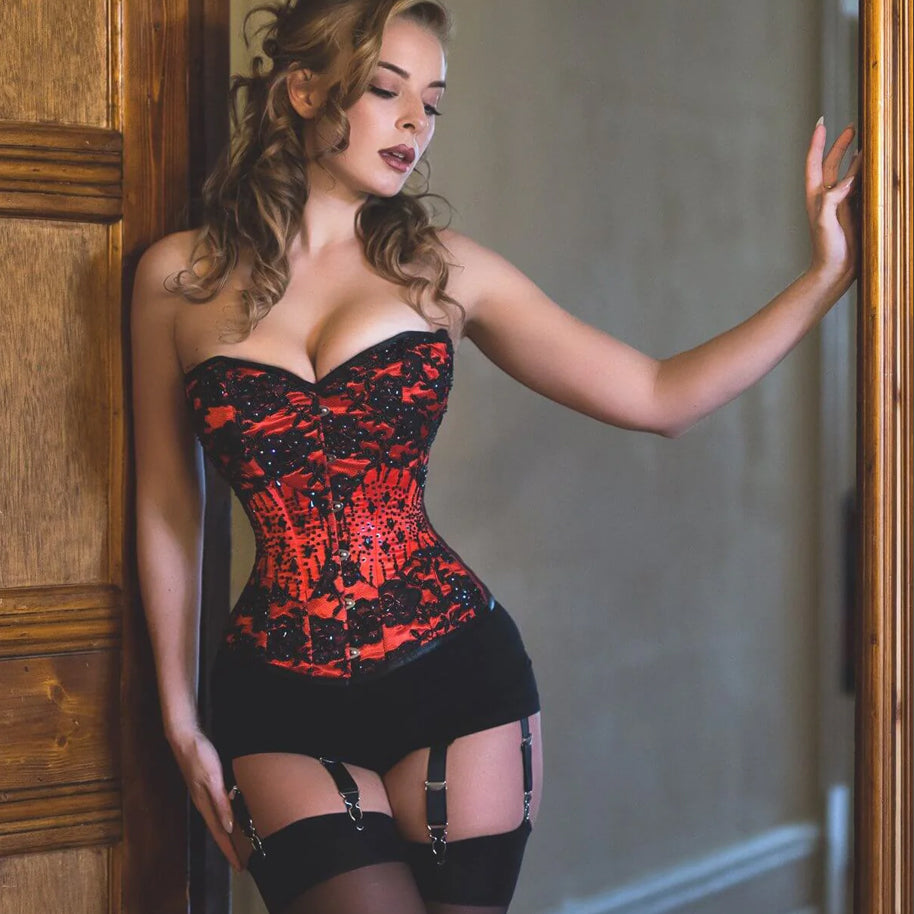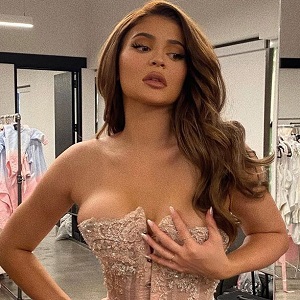Corset
The Captivating History of the Sexy Corset
The Origins of the Corset: From Functional to Fashionable
The corset has a rich and fascinating history, evolving from a functional undergarment to a symbol of fashion and femininity. Originating in the 16th century, the corset was initially designed to provide support and structure to the torso, helping to improve posture and accentuate the natural curves of the body.
Early corsets were often made of stiff materials like whalebone or steel, and were worn as a practical solution to help women achieve the desired silhouette of the time. As the centuries passed, the corset became increasingly ornate and decorative, transforming into a statement piece that was as much about aesthetics as it was about function.
By the 19th century, the corset had become a ubiquitous part of women’s fashion, with intricate designs and elaborate embellishments. The corset’s ability to shape and contour the body made it a sought-after accessory, and it became a symbol of wealth, status, and femininity.
Today, the corset continues to hold a place in fashion, with designers reinterpreting the classic silhouette in modern and innovative ways. From high-fashion runways to vintage-inspired streetwear, the corset’s enduring legacy as a garment that has both functional and fashionable roots is a testament to its enduring influence on the world of style.

The Corset’s Evolution Through the Centuries
Corsets have been a staple of fashion for centuries, evolving from functional undergarments to bold sartorial statements. Tracing the corset’s journey through the ages reveals how this iconic garment has adapted to changing cultural norms and aesthetic preferences.
In the 16th century, corsets served a practical purpose – providing support and shaping the torso. Constructed from rigid materials like whalebone, these early corsets had a utilitarian design. As fashion trends shifted, corsets became more ornate, incorporating intricate embroidery and decorative lacing.
The Victorian era saw the corset reach the height of its popularity, with increasingly cinched waistlines and dramatic silhouettes. This period also witnessed the emergence of health concerns around the restrictive nature of corsets, leading to the development of more flexible designs.
Throughout the 20th century, the corset’s role transformed. While still present in high fashion, it also became a symbol of female empowerment, with designers reimagining the garment in bold, subversive ways. Today, the corset continues to captivate, serving as a canvas for contemporary interpretations that celebrate its evolving cultural significance.
The Corset’s Controversial Role in Women’s Empowerment
Corsets have long been a subject of debate when it comes to women’s empowerment. On one hand, they were seen as a tool of oppression, forcing women into restrictive and uncomfortable garments. On the other, some feminists argued that the corset gave women more control over their bodies and fashion choices.
This complex history highlights the nuanced role corsets played in the women’s rights movement. While the corset was undoubtedly a symbol of patriarchal beauty standards, some women also used it as a means of self-expression and even defiance against societal norms.
Ultimately, the corset’s legacy remains a controversial one, with reasonable arguments on both sides of the debate. As we continue to examine the relationship between fashion, feminism, and women’s autonomy, the corset serves as an important case study in this ongoing conversation.
The Resurgence of the Sexy Corset in Modern Fashion
The classic corset has made a striking comeback in recent years, emerging as a bold statement piece in modern fashion. Once associated primarily with historical eras and fetishwear, the corset has undergone a remarkable transformation, now gracing the runway and high-street alike.
This resurgence of the sexy corset can be attributed to a shift in societal attitudes towards body positivity and self-expression. Designers have embraced the corset’s ability to accentuate the natural curves of the body, empowering wearers to celebrate their unique silhouettes. From intricate lace designs to sleek, minimalist styles, the modern corset has become a versatile and desirable garment.
Celebrities and fashion icons have played a significant role in propelling the corset’s return to mainstream popularity. High-profile appearances on red carpets and social media have normalized the wearing of corsets as a fashion statement, rather than solely an undergarment. This increased visibility has sparked a newfound appreciation for the corset’s ability to create a striking, confident look.
As the corset continues to evolve and adapt to contemporary tastes, it is clear that this iconic garment has secured its place in the modern fashion landscape. Whether paired with jeans, dresses, or even as a standalone piece, the sexy corset has become a symbol of empowerment and self-expression, captivating fashion enthusiasts around the world.

The Cultural Impact and Legacy of the Captivating Corset
Corsets have long held a captivating place in fashion and society, transcending mere undergarments to become symbols laden with cultural significance. Far more than just a means of shaping the figure, the corset has evolved to represent notions of femininity, power, and the complex dynamics between genders.
At the height of their popularity, corsets were not only functional but also imbued with class distinctions and social status. The intricate construction and luxurious materials used in their design spoke to the wearer’s affluence and social standing. This association with the upper echelons of society contributed to the corset’s enduring allure and mystique.
Beyond their sartorial implications, corsets have also played a role in shaping societal perceptions of the female form. The exaggerated silhouette created by the corset challenged traditional notions of the “natural” female shape, sparking debates around bodily autonomy and the societal pressures placed on women. This legacy continues to reverberate in modern discussions surrounding body positivity and the objectification of the female form.
Even as fashion trends have evolved, the corset’s influence persists. Its striking visual impact and symbolic weight have made it a recurring motif in art, literature, and popular culture, ensuring the corset’s lasting impact on our collective cultural consciousness.
Conclusion: Embracing the Allure and History of the Sexy Corset
The corset has a rich and complex history, evolving from a functional undergarment to a symbol of both oppression and empowerment. As we’ve explored, the allure of the corset lies in its ability to sculpt the body, enhance curves, and evoke a sense of vintage glamour.
While the corset has faced criticism for its potential to restrict movement and reinforce gender norms, many modern wearers have reclaimed it as a tool for self-expression and body positivity. Whether you choose to incorporate the corset into your wardrobe or appreciate it from afar, it remains a fascinating garment that continues to captivate and inspire.
Ultimately, the decision to wear a corset is a personal one, and there is no right or wrong way to approach this iconic piece of fashion history. By understanding its evolution and cultural significance, we can appreciate the corset’s enduring appeal and the diverse ways in which it continues to shape our sartorial landscape.

